
Winemaker Markus Niggli: "These will make a killer 2011 Merlot!"
After a dearth of blogging, I finally caught up with our winemaker, Markus Niggli for a comparison of the last several vintages of Borra wines.
A COOLING TREND
Following a string of pretty toasty-warm vintages, Markus recalled, “2009 was the first year with a cooler growing season and higher acidity. The wines were more crisp with a freshness even in reds, with the ‘09 47.5° Red Wine as the best example.”
Warning: the following contains a gratuitous display of numbers, requiring a quick background in high school chemistry.
“pH” is a measure of how much acid is in a liquid – wine in our case. It’s a pretty goofy system, because it’s the opposite of what you’d expect: the higher the pH number goes, the less acid there is. Tap water is pH 7, while wines range from take-the-enamel-off-your-teeth, lemon-like pH 3.0, on up to very soft pH 4.0. Nice, balanced, food-friendly wines tend to be near the middle, pH 3.5.
“For the Red Wine, 2007 and 2008 were big and lush with pH near 4, but the 2009 is 3.52, which is a more classic acidity,” says Markus. “And the alcohols are coming down. 2011 will have alcohols around 13.5%, not 14.5% or 15%. There’s less sugar, but more balance. 2008 was a sugar race and acid was lagging behind.”
Translation: during the growing season, sugar replaces acid in a grape as it ripens and develops complex flavors. A lot of warmth for too long a period means the sugars accumulate quickly and the acid drops quickly, heading toward pH 4. It also means there isn’t as much time for flavors to reach their potential.
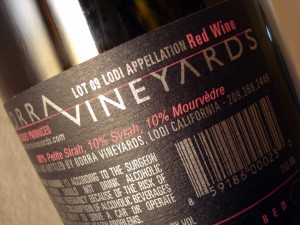
Our Lot 09 47.5° Red Wine is almost ready for pre-release to our La Dolce Vita Club Members.
The last few cool seasons have allowed the grapes to hold on to their acid while flavors bloom and sugars creep up in a more controlled fashion.
Per Markus, “The acid has more time to get softer and the cooler temperatures during the growing season holds the Brix from going through the roof while the grapes are hanging nicely, hopefully until mid-October or later.”
Winemakers get pretty excited over certain numbers that otherwise look plain boring. For example, Markus is wide-eyed ecstatic about Zinfandel this year: “Our 2011 Zin has 3.56 pH with 25.1° Brix! What else do you want?!? It’s right there! Our 2008 Zin pH was 3.9-4.0 with sugars over 27° Brix!”
Translation: 2011 will be a dynamite vintage.

Fresh 2011 Home Ranch Merlot grapes ready to be crushed.
INTENSE COLOR
These cool vintages for some reason give us the most intense color in our wines – that’s if you want to call pitch black color.
Markus bleeds off a few barrels of juice from almost all of his reds, not only to make these red wines a bit more intense, but also to have pink juice for making our popular dry-style Rosé.
But that intense color proved to be a challenge: “It’s hard to make a Rosé look like a Rosé this year, because after only a couple of hours of skin contact the juice that we bled off was so dark!”
THE RAIN ISSUE
“2009 was not a good year for Petite Sirah because of that huge October 13 rain. It’s the same this year, but two rains (October 5-6 and a surprise rain on October 10) in a short period speeded up rot. One rain, we can handle. A second, we cannot. All of a block of Syrah 877 in Gill Creek Ranch was lost to rot. The Rhône’s are thin-skinned. You try to grab a berry from the bunch and all you have is skin. The pulp just disintegrates right out,” says Markus with a look of forlorn disgust.
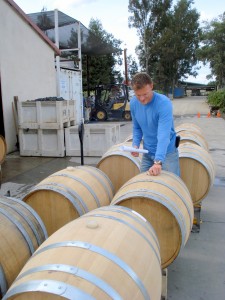
Every barrel must be checked for off odors - an indication that something is going wrong.
Rain, wind and otherwise oddball weather during berry set in May made us all brace for a smaller crop due to “misses,” where grapes never form, or due to “hens and chicks,” where small green grapes never grow and ripen. It also led to “shatter” where a light brushing of a cluster with your sleeve will cause random grapes to plop to the ground.
Back to Markus, “Crop size is moderate to light this year, but it varies with the winegrape variety. Zin is 50% down. Merlot had a 25% decrease over last year, which was overall 25% shy. We could have sold out our whole field of Zin, but we didn’t have enough for all our contracts. Prices and demand will go up for next year.
“Our Viognier block at Gill Creek Ranch gave us 47 tons and it should have been 100 tons, but the quality is insane at 4 tons per acre! I’m very happy with the Viognier this year. I’m also very happy with our Zin, Merlot and Field Blend, and the whites are really good. On the other hand, the Petite Sirah and Syrah may be just OK.”
The bottom line is that cooler vintages in Lodi are helping us make more intense, complex wines, but there won’t be nearly as much to go around. So stock up on your favorites!
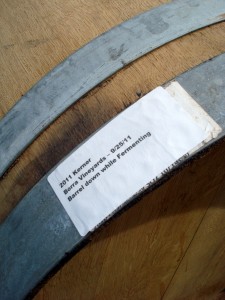
This German varietal Kerner, made with grapes from Mokelumne Glen Vineyard, will go into one of next year's white bottlings.
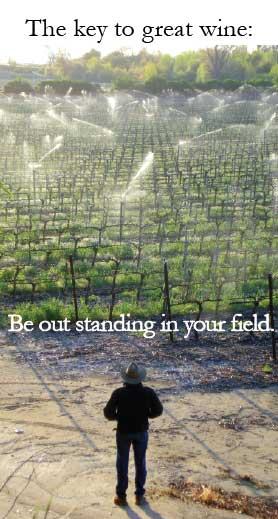

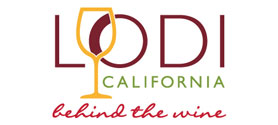
Leave a Reply